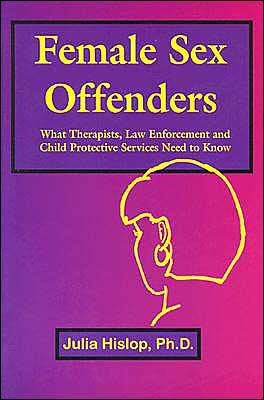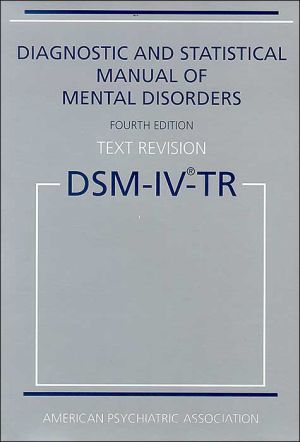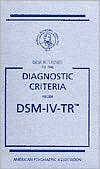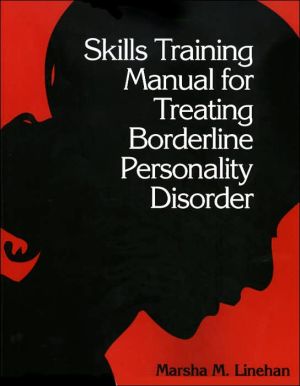Female Sex Offenders: What Therapists, Law Enforcement and Child Protective Services Need to Know
Female Sex Offenders have victimized an estimated three million people in the United States. Our children and youth are not protected, not believed and not treated for the associated trauma because society doesn't believe females are capable of committing sexual abuse. If we are going to protect the victims, we need to look at facts and not be guided by emotions based on mistaken beliefs. In this book, Dr. Julia Hislop explores the backgrounds of offenders, their methods of abuse and the...
Search in google:
Female Sex Offenders have victimized an estimated three million people in the United States. Our children and youth are not protected, not believed and not treated for the associated trauma because society doesn't believe females are capable of committing sexual abuse. If we are going to protect the victims, we need to look at facts and not be guided by emotions based on mistaken beliefs. In this book, Dr. Julia Hislop explores the backgrounds of offenders, their methods of abuse and the impact on victims. Research-based information, including precursors to abuse and methods to stop offending, will help therapists establish and prioritize treatment goals. Her opening chapter paints a chilling portrait of life events that have led girls to become female sex offenders.
Introduction11.Development of a Female Sex Offender3Debbie as an Infant3Debbie as a Preschooler4Debbie at Seven5Debbie in Junior High6Debbie as a Teenager7The First Offense8Early Adulthood92.What Harm Can Be Done Without a Penis?11Sexual Acts Committed Independently by Females11Direct Sexual Contact Disguised as Caretaking14Sexual Acts Committed with a Co-Offender16Females who Indirectly Participate19Indirect Sexualized Acts Noted in the Literature21Ritual Sexual Abuse that Includes Female Perpetrators22Summary233.Why Don't People Talk About Female Sex Offenders?29Reluctance of Victims to Report Female Child Molesters30Reluctance of Male Victims to Report Female Child Molesters32Laws are Less Likely to Recognize Males as Potential Victims of Sexual Abuse36Reluctance of Female Victims to Report Sexual Abuse by a Female37Reluctance of Female Sexual Abusers to Acknowledge Having Committed Sexually Abusive Acts40Societal Views Concerning Women Mask Female Perpetrated Child Sexual Abuse41Female Sexual Abusers May Not Become Known to Researchers45Professionals Are Not Trained to Recognize the Female Sexual Abuser46Summary494.Rates of Offending by Female Sex Offenders53The Problem of Defining Child Sexual Abuse53The Problem of Gathering Information Concerning Female Sex Offenders from Different Sources56Studies of Offender Populations57Studies of Victim Populations63Other Sources of Information on Female Sex Offenders73Summary745.Effects of Sexual Molestation by a Female on the Child75Impact Specific to Victims of Female Perpetrated Sexual Abuse75Evidence Concerning the Harm to Males from Female Perpetrated Child Sexual Abuse77Effects of Female Perpetrated Child Sexual Abuse upon Female Victims84Effects of Female Perpetrated Sexual Abuse on a Child: Consistency of Findings91Summary976.Childhood Sexual Victimization Histories of Female Sex Offenders101Sexual Abuse in the Backgrounds of Female Sexual Abusers102Cautions Concerning Study Comparisons108Summary1097.Nonsexual Abuse and Trauma Histories of Female Sex Offenders111Childhood Physical Abuse and Other Forms of (Nonsexual) Childhood Victimization Among Female Sex Offenders112Husbands and Mates of Female Child Molesters119Summary1248.Diagnoses and Co-morbid Problems Common to Female Sex Offenders127Psychological Difficulties of the Female Offender127Schizophrenia and Psychotic Disorders129Depression and Other Mood Disorders131Post-Traumatic Stress Disorder133Drug and Alcohol Abuse133Eating Disorders136Sexual Behavior/Sexual Dysfunction/Paraphilias137Dissociative Disorders139Personality Disorders/Traits139Multiple Disorders141Problems of Limited Intelligence, Learning Problems, School Problems, Attention Deficit/Hyperactivity Problems141Other Disorders143Violence144Harm to Self154Delinquency/Behavior Problems156General Inadequacy of Functioning (Educational, Occupational Problems)157General Inadequacy of Functioning (Relationship Problems)158Other Co-morbid Problems160Diagnostic/Assessment Considerations162Summary1669.Handling Client Difficulties with Participation in Therapy173Client Difficulties Participating in the Therapeutic Relationship173Therapeutic Stance of the Therapist180Role Modeling187Therapy Techniques for Facilitating Learning in the Early Stages of Therapy189Summary19110.The Early Tasks of Therapy195Establishing Safety196Improving Self-Esteem198Consolidating Identity200Teaching Coping Skills201Summary20411.Exploring Victimization and Patterns of Offending207Gradual Approach to More Personal, Specific and Emotional Concerns207Exploring Victimization and Its Relationship to Offending212Lack of a Sense of Appropriate Boundaries213Relationship Skills214Emotional Release216Struggle for Identity and Belonging217Distorted Sense of Normalcy218Survival219Sexual Preoccupation and Sexual Aversion to Adults219Lack of Self-Worth220External Locus of Control221Exploring Precursors and Alternatives to Victimizing221Practical Concerns Related to Treatment229Summary232References235Index255








